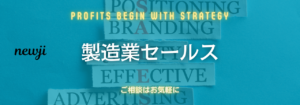- お役立ち記事
- Understanding regulations and quality standards for successful export of wood products

Understanding regulations and quality standards for successful export of wood products

目次
Introduction to Exporting Wood Products
Exporting wood products can be a profitable venture in the global market.
However, success in this field requires a comprehensive understanding of regulations and quality standards.
From the quality of the wood to packaging requirements, every detail matters.
Understanding these aspects not only ensures compliance but also enhances your products’ appeal to international buyers.
Importance of Regulations in the Wood Industry
Regulations in the wood industry serve several crucial purposes.
They protect forests from illegal logging and unsustainable practices.
By following regulations, you contribute to environmental conservation and sustainable wood production.
Moreover, regulations often ensure fair trade practices, promoting a level playing field for all exporters.
Non-compliance with regulations can lead to severe penalties and damage your reputation in the market.
Thus, familiarizing yourself with the regulations of your target market is essential.
These include trade tariffs, documentation requirements, and specific wood treatment standards.
Understanding Quality Standards
Quality standards in the wood industry establish the criteria that products must meet before export.
These standards help in maintaining product consistency, safety, and reliability.
Understanding these standards is vital for exporters to meet the expectations of international buyers.
In many countries, quality standards are set by national or international bodies.
For example, the International Organization for Standardization (ISO) provides guidelines for wood product quality.
Compliance with these standards can enhance your credibility and increase your products’ acceptance in foreign markets.
Wood Treatment and Safety Standards
Different countries have specific treatment and safety standards to prevent the spread of pests and diseases through wood products.
Heat treatment and chemical fumigation are common practices required by importing countries.
For instance, the International Standards for Phytosanitary Measures (ISPM 15) require wood packaging materials to be treated to prevent the spread of wood pests and diseases.
Understanding and implementing these treatments are crucial for meeting international safety standards.
Non-compliance could result in rejected shipments or quarantines imposed on your products, leading to financial losses.
Grading and Certification Requirements
Grading standards classify wood based on attributes like species, moisture content, and structural properties.
The American Lumber Standard Committee (ALSC) and similar organizations provide guidelines on grading.
Certification from recognized bodies like the Forest Stewardship Council (FSC) or the Programme for the Endorsement of Forest Certification (PEFC) is often required to assure buyers of the wood’s legality and sustainability.
Such certifications can enhance the marketability of your products and sometimes are mandated by certain markets or industries.
These certifications not only assure buyers of responsible sourcing but also can be a unique selling point for your products.
Navigating Export Documentation
Export documentation is a critical aspect of the export process.
Essential documents often include a commercial invoice, packing list, bill of lading, and certificates of origin.
Each document serves a specific purpose and facilitates the smooth movement of goods across borders.
Incorrect or incomplete documentation can delay shipments or lead to additional costs.
Staying informed about the precise documentation requirements of your destination country is vital for smooth transit.
Market Research and Entry Strategies
Conducting thorough market research is key to successful wood product exportation.
Understanding the demand, competition, and preferences in potential markets can help tailor your products and marketing strategies effectively.
Once you have identified a viable market, consider your entry strategy.
Direct exporting, partnerships with local distributors, or leveraging digital platforms are some ways to enter new markets.
Each strategy has its benefits and challenges; choose one that aligns with your business goals and resources.
Pricing Strategy
Developing a competitive pricing strategy is crucial for capturing market share.
Consider all costs involved, including production, logistics, taxes, and tariffs.
Set a price that is competitive yet profitable, taking into account the quality and unique features of your products.
Building Strong Relationships with Buyers
Establishing strong relationships with buyers is essential for sustainable export success.
Communication is key; keep buyers informed about your products, processes, and any changes.
Providing excellent customer service and addressing any issues promptly can build trust and foster long-term partnerships.
Consider attending trade shows and exhibitions to network with potential buyers and industry experts.
Such events provide opportunities to showcase your products and gain insights into market trends and buyer preferences.
Conclusion
The export of wood products is a complex process that requires a deep understanding of regulations and quality standards.
Compliance with these regulations not only ensures smooth operations but also enhances your product’s credibility in the global market.
By focusing on quality, documentation, market research, and buyer relationships, you can position your business for successful international trade.
Stay informed about the latest industry developments to adapt your strategies accordingly.
With the right knowledge and approach, exporting wood products can be a rewarding venture.
 資料ダウンロード
資料ダウンロード
QCD管理受発注クラウド「newji」は、受発注部門で必要なQCD管理全てを備えた、現場特化型兼クラウド型の今世紀最高の受発注管理システムとなります。
 NEWJI DX
NEWJI DX
製造業に特化したデジタルトランスフォーメーション(DX)の実現を目指す請負開発型のコンサルティングサービスです。AI、iPaaS、および先端の技術を駆使して、製造プロセスの効率化、業務効率化、チームワーク強化、コスト削減、品質向上を実現します。このサービスは、製造業の課題を深く理解し、それに対する最適なデジタルソリューションを提供することで、企業が持続的な成長とイノベーションを達成できるようサポートします。
 製造業ニュース解説
製造業ニュース解説
製造業、主に購買・調達部門にお勤めの方々に向けた情報を配信しております。
新任の方やベテランの方、管理職を対象とした幅広いコンテンツをご用意しております。
 お問い合わせ
お問い合わせ
コストダウンが利益に直結する術だと理解していても、なかなか前に進めることができない状況。そんな時は、newjiのコストダウン自動化機能で大きく利益貢献しよう!
(β版非公開)



